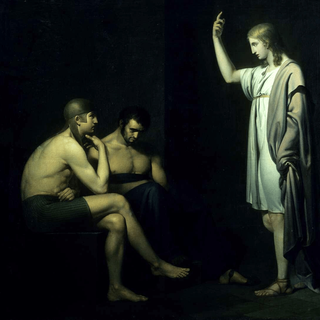
Tell Me More: Talking Sexual Health Misconceptions and the Politics of Women’s Health With Dr. Tanaya Narendra
“The way we’re taught medicine in India is very paternalistic, because we’re not taught concepts like ‘patient autonomy.'”

In The Swaddle’s interview series Tell Me More, we discuss crucial cultural topics with people whose work pushes societal boundaries.
Dr. Tanaya Narendra is an internationally trained medical doctor, embryologist, scientist, and women’s health content creator. After studying for a masters at the University of Oxford, she subsequently registered as a doctor in England, and remains committed to making public medical education her life goal. The Swaddle’s Aditi Murti spoke to Dr. Narendra about sexual and reproductive health misconceptions, and the importance of viewing women’s health as a political matter.
The Swaddle: There’s something inherently political about choosing to work with women’s health, but you don’t see that perspective in young doctors who choose women’s health streams while studying medicine. Why do you think so?
Dr. Tanaya Narendra: In India, you don’t get to choose the specialization you study in. You get a rank, and you get your pick depending on the rank. For example, when I sat for NEET-PG exams in 2017, I received a rank that would allow me ENT (ear, nose, throat), or biochemistry, which is a non-clinical subject. I wasn’t allowed more top-rated subjects like gynecology and surgery. So your passion can go to hell, essentially. This is why there’s no space for passion-building in medicine in India. You can want to build something, but it doesn’t translate to much, as far as specializations go. Plus, politics doesn’t come up with medical students because they’re not educated beyond the physics, chemistry, biology required to help them sail through the rat race. It’s all about how much you study, and what rank you get.
But, of course women’s health is immensely political. India is one of the worst countries for gender equality. Out of 180 countries, we rank in the 130s, which is so bad! The fall-out from this is less women accessing healthcare because they simply haven’t had any previous access and see it as a frivolous expense. There’s another 2011 study that talks about India having 40% of the global heart-related healthcare burden because we don’t diagnose on time. Only 20% of women diagnosed will get surgery for congenital heart disease because the scarring from surgery can make you less marriageable. I remember a Lancet study from 2014 that says that if sex work were decriminalized, there would be a 30-40% reduction in the number of HIV infections within a decade — which is a huge number. HIV, is of course, preventable, which further drives home the importance of treating women’s health as political.
TS: That’s fascinating, because we know that Indian scientists are not heavily published in global science literature. Does medicine also suffer from the same problem, even though it’s far more prestigious in India?
TN: In all my years in an Indian medical college, I wasn’t taught how to read a medical journal. The general perception in India is that people who publish papers and do more academic work won’t have a good clinical career, whereas in other countries, it is imperative to publish in order to have a career. The rank problem also manifests here — elsewhere, if you’d want to study physiology, you’d major in physiology and immerse yourself in that rather than a medical career. Here, if you get a certain rank, you study physiology at a graduate school level without any previous knowledge on how research works. I remember approaching so many people to try to understand how to read and write academic papers, and I was pointed to people who ‘gave up’ medicine to do publishing only.
There’s also this idea of medicine being aspirational in India rather than passion-related. A need to study medicine, very generally, might sound great for children of doctors, people seeking upward mobility — it doesn’t come from a place of “I want to find a cure for cancer!” that often. Full medical training in India would take you about nine years as compared to 13 years in the U.S, because skipping the pre-medical college years is faster. This does mean you’re dealing with patients at a very young age, and aren’t exposed to science as much, but it does help produce more doctors at a faster rate for a growing country — this is about economics as well.
TS: Indian women are frequently disappointed with their gynecologists. Beyond the lack of passion and political purpose, what informs some gynecologists’ regressive behavior with their patients?
TN: The way we’re taught medicine in India is very paternalistic, because we’re not taught concepts like ‘patient autonomy’ — we’re told that this is what you have and this is the surgery you perform for your patients. There’s no idea of what the patient seeks or desires or what the patient even knows. Another factor that influences such attitudes is the language that is used to teach medicine — I remember that I learnt in medical school that cervical cancer occurs in ‘promiscuous women’ only, and I had to do independent reading to learn that cervical cancer is also completely preventable. I remember learning about “lesbianism” alongside pedophilia and necrophilia in a forensic science class about sexual perversions. All of this, plus cultural, patriarchal upbringings contribute to gynecologists’ attitudes towards patients. I’ve also been shamed by fellow gynecologists who are outraged that I talk about sex publicly.
TS: Before doctors chose to utilize social media platforms to educate people about health issues, health information was pushed by influencers who meant well, but occasionally made errors. How does a health professional respond to a situation like this?
TN: So, here’s an example — I saw a very popular influencer post about sanitary pads and how they’re dangerous to utilize, which is factually incorrect. I spent two days in this person’s DMs, armed with studies that disproved the claims they had made. They listened to me for two days, and then blocked me. So I did what I could, and tried to dispel the false information they started about sanitary pads on my own platform, which led my followers to question and call-out the influencer’s false post directly. So, I guess you can’t really prevent fake information on the internet, but you can definitely fight it with the right tools, which is very powerful.
Related on The Swaddle:
TS: Birth control in India is often synonymous with the emergency contraceptive pill. What are some misconceptions that lead to accidental misuse of this type of contraceptive?
TN: So the main problem here is that a lot of people use emergency contraceptives as their ‘main’ method of contraception. People also take this pill after oral sex in order to prevent pregnancies in case a person touches a another with pre-cum on their fingers — very low likelihood of a pregnancy there. There’s also no real idea of what an emergenct contraceptive pill does, because your average ad will just show you a frolicking heterosexual couple. This means that the target audience for these pills is married couples who are assured access to a doctor in case something goes wrong. The emergency contraceptive pill does have side effects due to the large amount of hormones you receive from a single dose, but those side effects (irregular cycles, tender breasts, unpredictable ovulation and bleeding, headaches) aren’t long term and do not affect fertility. A lot of gynecologists will try to tell you that using an emergency contraceptive will ruin your fertility forever, but that’s simply not true. So there’s high potential for misuse due to a lack of awareness, but no serious long-term implications.
TS: Oh yeah — birth control ads do specifically center heterosexual couples! Which leads me to wonder — queer women frequently don’t see the need to use protection while in sexual relationships with women — should they reconsider?
TN: Yes, we do need to talk more about [safe sex] in non-heterosexual couples. Generally, [some contraceptives] are important for preventing sexually transmitted infections, no matter how you have sex! I don’t think I knew what a dental dam was before I moved abroad, even though both my parents are doctors — fertility specialists! You see how condoms have this great advantage of preventing both pregnancies and sexually transmitted diseases. But what if you don’t have a penis and want to have sex with someone who has a vagina? If you cover your genitals with a shield, you’re indestructible. This is also how dental dams work, but while a nirodh condom costs 25 paise, a dental dam costs Rs. 10. This is a one-time use thing that you throw away. Technically, you can also fashion a dental dam from a condom if you cut the end of the tubes and use the latex piece as a shield placed upon the vulva, or the anus, or even sexual toys that you might use and share with your partner.
Related on The Swaddle:
The Most Traumatic Thing About Abortions Is the Judgment
TS: With respect to misinformation, what women’s health problems do people seek homeopathic interventions for most often? I’m going to throw out a guess — is it fertility?
TN: Fertility — yeah, definitely a big thing, but it’s a lot more babas and poojas and less AYUSH ministry. I actually think the most common are hyroid and polycystic ovarian syndrome (PCOS). Both are chronic diseases, both involve changing your lifestyle and tweaking the treatment often. See, I’m not against homeopathic medicine, but a lot of these AYUSH people will come and tell you that –Hey, this condition you’ve been trying to battle for several years? I’m going to cure it with one nushka. Of course, people fall for that because actual doctors don’t believe in informing patients properly! AYUSH doctors are taking care of PCOS patients without knowing the pathology or etiology of the disease. The most famous video about PCOS right now in India? Made by a gym-trainer who knows jackshit about PCOS, but still tells you how to cure it.
TS: I’m also curious about the India-specific misconceptions about miscarriage and how they affect pregnant women.
TN: Miscarriages are also plagued bybabas — people won’t come to us on time because there’s this linkage between possessions, evil eyes and miscarriage. Another big problem is that some miscarriages don’t lead to women passing out the contents of their uterus completely and need to go to a doctor who needs to clean them out. A lot of times, you don’t find out about this unless you undergo an ultrasound post the miscarriage, which a lot of women don’t do. So they’re carrying out the Retained Products of Conception (RPOC), which gets infected. Women, especially from the rural sector, will only come to us when the infection hits their pelvis. Of course, there’s also no patient-centric language and care, and a lot of harassment of birthers in Indian obstretics. So major problems — violence and delayed presentation.
TS: Do you think Indian doctors pay attention to women’s sexual disability at all?
TN: There was the All Indian Conference of Obstretics and Gynecology this year, with about 14,000 gynecologists from around the world. The vaginismus lecture had about five people, including me and my mother. So…it’s not addressed. I’m actually working on a study about how much gynecologists know about psychosexual disorders — even if one person would know about it, I simply wouldn’t know who to refer them to — be it gynecologist or therapist. This is the thing with multidisciplinary treatments in India — PCOS needs to be handled by a gynecologist, nutritionist and endocrinologist, and even a general physicial if needed. But, somehow, people think one gynecologist will literally do everything.
This interview has been condensed and edited for clarity.
Aditi Murti is a culture writer at The Swaddle. Previously, she worked as a freelance journalist focused on gender and cities. Find her on social media @aditimurti.
Related


It’s Okay: Not To Have An Opinion About Everything
